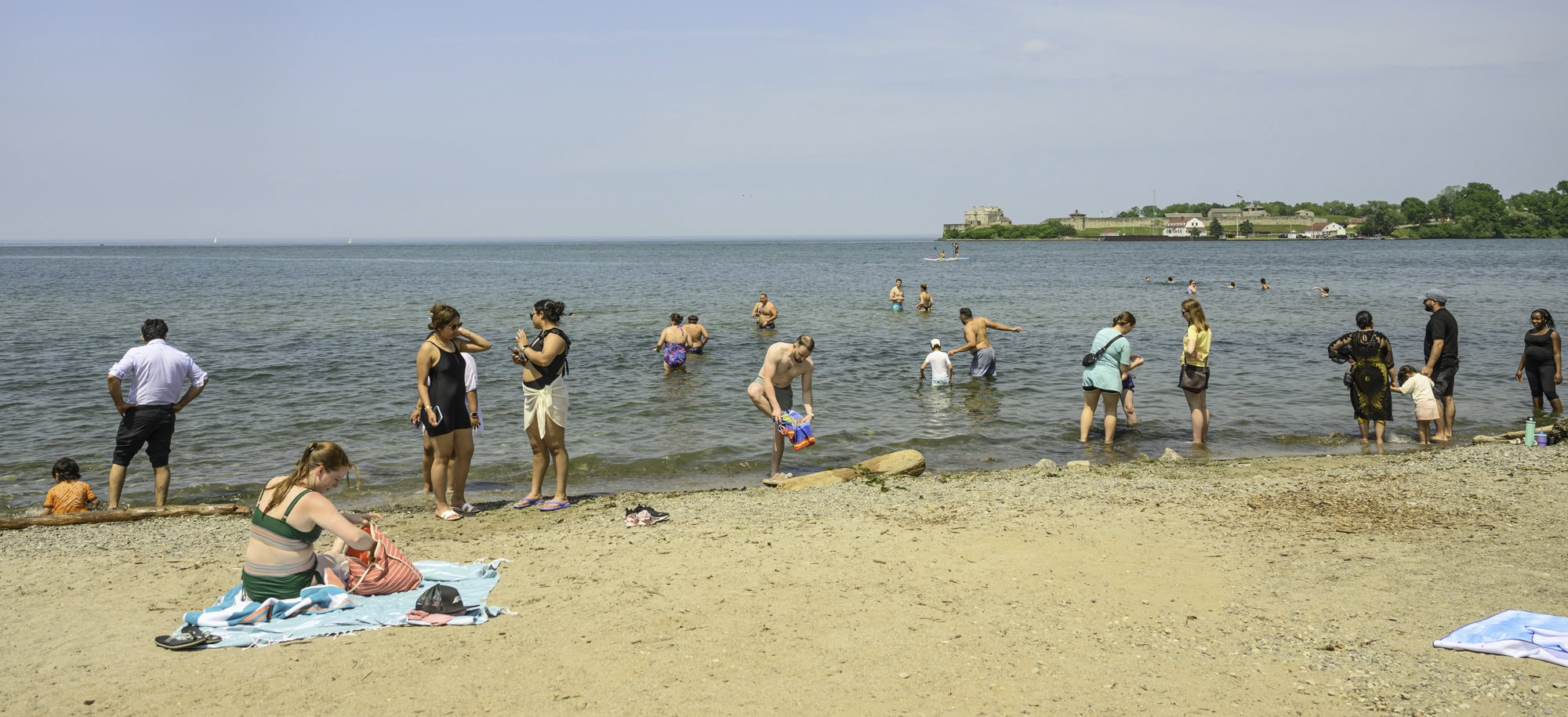Persistent high E. coli levels meant Queen’s Royal Beach in NOTL passed less than half the water quality tests conducted by the region this summer — and, in the peak weeks of July, the water was only safe about one-third of the time.
It was another tough summer for Niagara-on-the-Lake’s only monitored and tested public beach.
In the past, Queen’s Royal, home to the town’s famous gazebo, has often been declared unsafe, so this year The Lake Report obtained and analyzed water test data gathered by Niagara Region staff to determine how good — or bad — the situation was.
Our analysis concludes that, on most summer days, people may be risking their health by choosing to enter the water at Queen’s Royal, especially when the weather is really hot. And that’s when the beach is busiest.
As of the end of August, test samples gathered every Tuesday and Thursday since Victoria Day, May 20, showed the beach water was consider unsafe for 54 days and passed muster for 50.
While that’s nearly a 50 per cent pass rate, it doesn’t tell the whole story, as the single longest stretch of clean water results came in the last two weeks of August, when Queen’s Royal earned a pass for 13 days straight.
However, during the peak summer weeks, with high heat and humidity almost daily, and people eager to cool off, the water was not a safe choice as E. coli counts surged.
In all instances, when the water was deemed unsafe it was because E. coli levels exceeded provincial standards.
Data supplied by Niagara Region shows that from the first day of summer on June 20 through Aug. 18 the water passed tests for 19 days, but failed repeatedly over 41 days. That’s a 68 per cent fail rate.
Overall, July was the worst month, as the water at the popular waterfront attraction was considered safe on only 10 of 31 days, also a 68 per cent fail rate.
That poor showing over 60 days coincided with one of the hottest and most humid summertime periods in recent memory as temperatures were regularly in the high 30s Celsius and zoomed to over 40C with the humidity.
Cooler, less humid weather arrived in late August and the final test of the season was done last Thursday, on Aug. 28.
It showed Queen’s Royal ended the summer on a high note, having passed all four of its tests from Aug. 19 to 28. The park was packed with beachgoers over the Labour Day weekend.

Queen’s Royal Park beach water test results from May 20 to Aug. 31
Days safe: 50 | Days unsafe: 54

E. coli is especially dangerous for children, seniors and those with depressed immune systems, the region warns on its website.
And the Mayo Clinic advises that swallowing water with high E. coli content can lead to an infection that causes stomach cramps, diarrhea and vomiting.
In severe cases, it can lead to kidney failure. It usually is more severe in children than adults.
A lot of factors can affect beach water quality, including heat, wind, large numbers of swimmers and heavy rainfall.
In fact, regional officials emphasized, water quality can change from hour to hour, which is one of the reasons they have stopped erecting the bright yellow “warning” signs when water failed a test and opted for online updates for all of Niagara’s 19 tested beaches.
Because water quality is so volatile, a pass one day doesn’t mean the water is safe the next day. Likewise, a failed test on a Tuesday doesn’t necessarily mean the water is unsafe on Wednesday.
However, with testing only done twice a week, for the purposes of this analysis, The Lake Report considered the beach safe unless a negative test was recorded.
While Niagara’s beaches were never officially closed outright, the region posted online advisories warning people to avoid the water.
Information signs, like the one at Queen’s Royal, no longer reflect test results. Instead of saying whether the water is considered safe or not, the signs direct people to the region’s website for more details.
The water problems didn’t stop visitors and residents alike from hitting the beach to cool off on hot summer days, though, as previous stories in The Lake Report noted, many people said they never saw the region’s lone advisory sign at Queen’s Royal and so didn’t know if the water was safe.
Testing is now complete for the summer and won’t resume till next May.
Niagara has a lot of public beaches and tests more sites than any major municipality between here and Oshawa, research by The Lake Report discovered.
For instance, Toronto checks water daily, York “usually” tests twice a week, but most municipalities rely on a single weekly test.
Hamilton checks seven locations, Halton monitors eight, Peel just four, York does 14, Toronto checks 10 daily and Durham tests eight.
However, when it comes to alerting the public about failed tests, Niagara is an outlier in solely using online notifications.
In addition to information signs and web postings, all the other Golden Horseshoe municipalities (except Hamilton) use some form of active signage or flags on the beach to inform the public of dangerous E. coli levels or that the water has passed tests.










